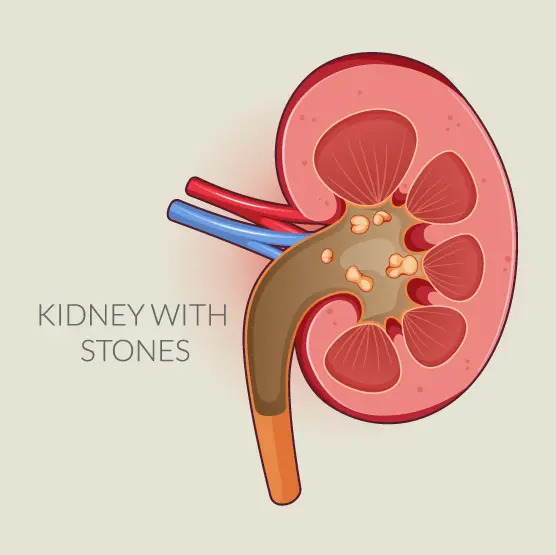
Bardhaman

The urologists at Pristyn Care are highly experienced in conducting a thorough diagnosis for kidney stones. The diagnosis may include a physical examination, in which the doctor will ask about your medical history and current medication if you are taking any. However, to detect the underlying cause, the doctor would recommend a few diagnostic tests:

After the results of the diagnosis, the doctor will initiate and advise the best-suited kidney stones treatment according to the condition.
Delivering Seamless Kidney Stone Surgical Experience
We offer treatment through various non-invasive and minimally-invasive methods, including RIRS, ESWL, PCNL, etc., to ensure patients' comfort by reducing complications and downtime.
We are associated with the top hospitals in the city. This lets our doctors provide the best treatments for kidney stones using the most cutting-edge technology and ensure the best treatment outcomes. Our associated hospitals are well-equipped with all the facilities that the patients may need for a hassle-free treatment journey.
Our team consists of the best urologists in the city, who are highly trained in treating even the most complex cases of kidney stones. They have 8+ years of experience in providing effective diagnosis and treatment for kidney stones.
We accept all insurance for kidney stone treatment. We also have a dedicated insurance team to assist patients throughout the insurance claim procedure and make the process smooth for the patients.
There are three easy ways to book an appointment with the best urologist for kidney stones surgery at Pristyn Care:
Pristyn Care has some of the best urologists with extensive training and years of experience in kidney stone surgeries. Our doctors are skilled in advanced treatment techniques to ensure optimal outcomes. You can book an appointment in the following ways:
Kidney stones have various complications. Further delaying kidney stone removal can lead to kidney damage or even permanent failure.
You should go to the hospital for kidney stones as soon as the symptoms appear. It is not healthy to delay the treatment for kidney stones. Ignoring or delaying the treatment may cause complications, including blockage in the ureter and hydronephrosis, a condition in which the kidneys swell up. To prevent these complications, it is important to visit the best hospital for stone surgery in Bardhaman as early as possible.
Kidney stones of size greater than 5mm require surgery. Such stones can be stubborn and cause unbearable pain. Therefore, a surgical procedure to remove these stones is inevitable. Consult Pristyn Care for more information on the treatment of kidney stones.
Drinking beer can help flush out small stones (4mm or less) via urine. However, beer is an oxalate-rich beverage that also contains high calories. Therefore, consuming too much beer can increase oxalate content in the body and increase the risk of being overweight.
Kidney stones usually do not interfere with conception. So you can get pregnant if you have kidney stones. However, if the stones are too large to pass naturally, they can increase the risk of premature labor and C-sections. Therefore, you must get them treated at the earliest possible.
.svg)
.svg)
.svg)